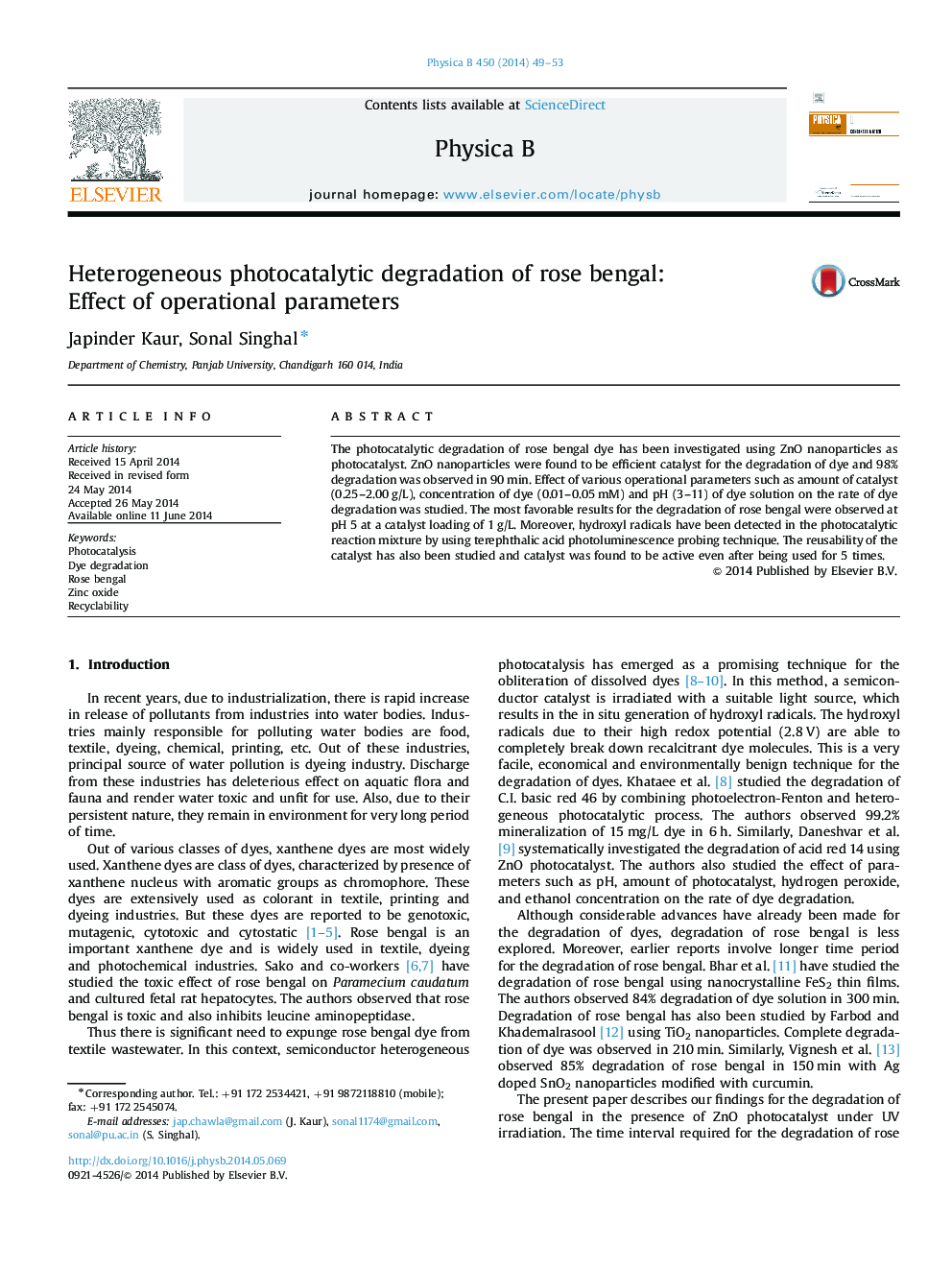| Article ID | Journal | Published Year | Pages | File Type |
|---|---|---|---|---|
| 8162494 | Physica B: Condensed Matter | 2014 | 5 Pages |
Abstract
The photocatalytic degradation of rose bengal dye has been investigated using ZnO nanoparticles as photocatalyst. ZnO nanoparticles were found to be efficient catalyst for the degradation of dye and 98% degradation was observed in 90 min. Effect of various operational parameters such as amount of catalyst (0.25-2.00Â g/L), concentration of dye (0.01-0.05Â mM) and pH (3-11) of dye solution on the rate of dye degradation was studied. The most favorable results for the degradation of rose bengal were observed at pH 5 at a catalyst loading of 1Â g/L. Moreover, hydroxyl radicals have been detected in the photocatalytic reaction mixture by using terephthalic acid photoluminescence probing technique. The reusability of the catalyst has also been studied and catalyst was found to be active even after being used for 5 times.
Related Topics
Physical Sciences and Engineering
Physics and Astronomy
Condensed Matter Physics
Authors
Japinder Kaur, Sonal Singhal,
